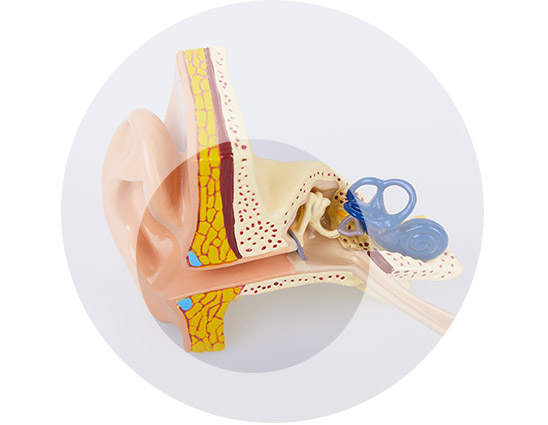All-new Oticon Zeal™ - The first, discreet hearing aid to do it all.
All-new Oticon Zeal™ - The first, discreet hearing aid to do it all.

Conductive hearing loss occurs in the outer or middle part of the ear. This is where sound is converted to vibrations and sent to the inner ear.
The name 'conductive' hearing loss refers to the problems related to the transfer of sound waves (due to a blockage or other impediment in your ear).
Too much ear wax, a ruptured eardrum, or even ear infections can all cause conductive hearing loss.


Conductive hearing loss is often easy to identify, and can be caused by the following:
Hearing loss is divided into the following categories (based on which part of the ear is damaged): sensorineural, conductive, and mixed hearing loss.
Conductive hearing loss is usually the result of a disruption to the sound's path as it travels from the outer/middle ear to the inner ear. Sensorineural hearing loss, on the other hand, happens when the delicate nerve fibres of the inner ear become damaged.
Mixed hearing loss occurs when both sensorineural and conductive hearing loss occur in the same ear.
Conductive hearing loss is sometimes accompanied by pain or discomfort – or the feeling that "something is wrong" in the ear. Other common signs of conductive hearing loss may include:

Time may be all that is needed to recover from less severe cases of conductive hearing loss. In other cases, it can be treated medically in one of these ways: